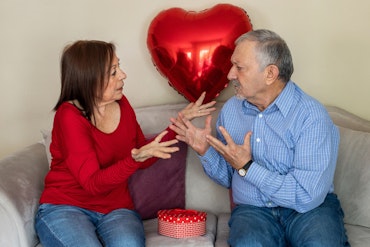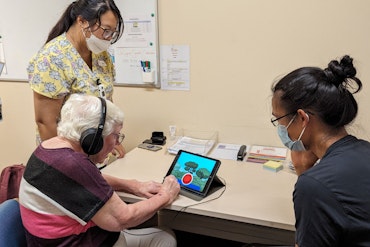New form of therapy shown to reduce chronic pain of older veterans
New research has revealed that talking through painful experiences may physically reduce symptoms of chronic pain for older veterans.
![<p>Doctors have seen a 67 percent rise in patients presenting with chronic pain from 2010 – 2020. [Source: Rose Marinelli via Shutterstock]</p>](https://agedcareguide-assets.imgix.net/news/articles/wp/Rose-Marinelliveteran__1806.jpg?fm=pjpg&format=auto&w=550&q=65)
Doctors have seen a 67 percent rise in patients presenting with chronic pain from 2010 – 2020. [Source: Rose Marinelli via Shutterstock]
Key points:
- One in five Australians aged 45 and over live with persistent and ongoing pain according to the Australian Institute of Health and Welfare
- Veterans are more likely to experience chronic pain, as a result of ageing and the increased likelihood of sustaining an injury while serving
- People with chronic pain are more likely than those without chronic pain to experience mental health conditions, including depression, anxiety, sleep disturbance and fatigue
A recent study has found chronic pain among older adults could be significantly reduced through a newly developed psychotherapy that works by confronting past trauma and stress-related emotions that can heighten symptoms of pain.
The new form of therapy is known as ‘emotional awareness and expression therapy,’ which researchers tested on older veterans to manage their chronic pain and mental well-being.
The study found that 63 percent of veterans who underwent EAET reported at least a 30 percent reduction in pain — a clinically significant change — after treatment compared to only 17 percent of veterans who underwent cognitive behavioural therapy.
Pain reduction was reported among 41 percent of EAET participants six months after treatment compared to 14 percent of CBT patients. Additionally, EAET patients reported greater benefits for addressing anxiety, depression, PTSD and life satisfaction.
In Australia, approximately one in five adults over the age of 45 reported experiencing chronic pain. The prevalence of chronic pain was also reported to increase with age, as nearly one in four people over the age of 85 were estimated to live with pain.
Lead author Brandon Yarns, an assistant professor at the University of California, Los Angeles Health’s Department of Psychiatry and Biobehavioral Sciences, said most people with chronic pain don’t generally consider psychotherapy as a form of treatment.
“[People with chronic pain] are thinking along the lines of medications, injections, sometimes surgery or bodily treatments like physical therapy,” he said.
“Psychotherapy is an evidence-based treatment for chronic pain. What this study adds is that the type of psychotherapy matters.
Cognitive behavioural therapy has long been the ‘gold standard’ for psychotherapeutic treatment of chronic pain among veterans, Yarns said.
“The goal in CBT is not necessarily to cure pain but to learn to cope and live well despite chronic pain,” he added.
By comparison, EAET has one primary intervention: experiencing, expressing and releasing emotions.
Patients participating in the new form of therapy, developed in the 2010s, are asked to focus on a stressful interaction, from anything as mundane as being cut off by a driver to severe traumas such as their experiences in military service.
“If there is a hurt or stressor, people have a series of normal, natural emotional reactions. There might be anger, guilt and sadness; because these feelings are painful, people often avoid them, but EAET helps people face difficult feelings with honesty and self-compassion,” Yarns said.
“In therapy, they can release anger, pain and guilt that they’ve been carrying and are left with self-compassion in the end.”
In the study, researchers recruited 126 veterans — predominantly men — ages 60 to 95, with at least three months of musculoskeletal pain. More than two-thirds of participants had a psychiatric diagnosis, with about one-third having post-traumatic stress disorder.
The study, published in JAMA Network Open, was the first full-scale clinical trial of EAET among older adults, older men and veterans, with previous studies being largely made up of younger, female participants, Yarns said.
The Australian Government acknowledged those living with chronic pain in the 2024 – 2025 Federal Budget and committed to funding:
- $22.1 million over two years from 2024 – ‘25 to continue support for preventive health and chronic disease research, including patient and clinician services for Australians with chronic conditions;
- $71.7 million over four years from 2024 – ‘25 to provide wrap-around care for people with severe and complex needs in primary care settings, through the design and delivery of mental health multidisciplinary services;
- $2.6 million in 2024 – ‘25 to support patient care improvement and general practitioner services, health professional education, condition awareness and digital resources.
For more information about support for veterans, please visit the Department of Veterans’ Affairs website or the Open Arms website.
Let the team at Talking Aged Care know your thoughts and subscribe to the newsletter for more information, news and industry updates.
Related content:
Wound care and what you need to know























